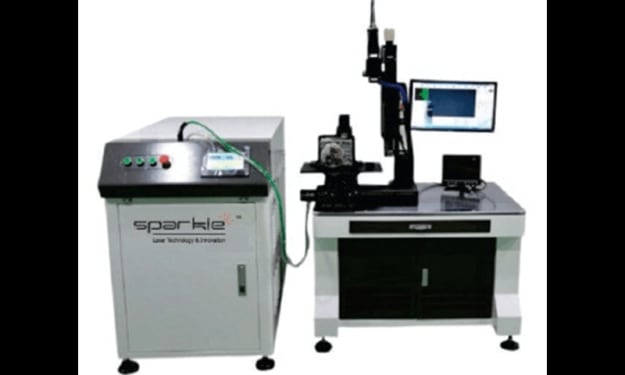Scientists invent brain chip to reduce risk-taking in monkeys
a brain chip that can actually dial down risk-taking behavior in monkeys.

- Brain Chip Technology: The brain chip is a tiny device that gets implanted into a monkey’s brain and can influence its decision-making process. It interacts with the neurons in the brain, specifically those involved in risk-taking behavior, and uses electrical signals to change the activity of these neurons.
- Behavioral Changes: After the brain chip was implanted, the monkeys showed significant changes in their behavior. They were less likely to engage in activities that they previously would have considered risky. This change in behavior was consistent across all monkeys that received the chip, indicating that the chip was effective in influencing their decision-making process.
- Potential Applications: The potential applications of the brain chip extend beyond neuroscience and could revolutionize several other fields. In medicine, the chip could be used to treat mental disorders by altering neuronal activity in specific parts of the brain. In psychology, it could provide valuable insights into decision-making processes and risk-taking behavior. In the field of artificial intelligence, the chip could help to create more sophisticated AI models by mimicking the way the brain processes information.
Hey there! So, here’s the scoop. Some super-smart folks over at Kyoto University in Japan have come up with this wild idea – a brain chip that can actually dial down risk-taking behavior in monkeys. Crazy, right?
Here’s how it works. They used flashes of light to target different parts of the monkeys’ brains. Depending on which side of the brain they lit up, the monkeys would either go all in and take bigger risks or play it safe with lower-risk choices. It’s like flipping a switch in their brains!

The scientists focused on a specific area of the brain called Brodmann area 6. It’s a part of the frontal cortex that’s all about planning complex movements.
When they directed the light at the top part of this region, the monkeys started playing it safe, choosing smaller rewards and being more cautious.
Now, monkeys are natural risk-takers. So, the scientists first had to figure out the monkeys’ risk preferences.
They trained the monkeys to choose different colored spots, each linked to different amounts of water rewards. Some spots were more likely to give water, but the bigger the reward, the lower the chance of getting it.
One of the big surprises from this study came from Veit Stuphorn, an Associate Professor of Neuroscience at Johns Hopkins University.
He pointed out that two neighboring regions in the frontal cortex seem to work together to regulate risk attitude. It’s like they’re in a tug-of-war, both increasing and decreasing risk-seeking. This could help us understand the brain circuits that control this ability.

This groundbreaking study is more than just a cool science experiment. It shows us the potential of brain chip technology to influence behavior. Plus, it gives us valuable insights into how our brains handle risk.
This could pave the way for new research into the complex workings of the brain’s frontal cortex, and even help us better understand and tackle gambling addiction in humans. So, who knew monkeying around with brain chips could lead to such fascinating discoveries?
What is the science behind the brain chip and how does it work?
The brain chip is a fascinating piece of technology that’s making waves in the field of neuroscience. It’s a tiny device that gets implanted into a monkey’s brain and can influence its decision-making process.
The chip interacts with the neurons in the brain, specifically those involved in risk-taking behavior. It uses electrical signals to change the activity of these neurons, which in turn influences the monkey’s decisions.
The exact mechanism of how the chip influences neuronal activity is still a bit of a mystery, but it’s thought to involve a mix of electrical stimulation and biochemical modulation.
How does the brain chip influence the decision-making process in monkeys?
When the chip is activated, it sends out electrical signals that interact with these neurons. This interaction changes the way the neurons fire, which in turn influences the decisions that the monkey makes.
For example, if the chip is programmed to reduce risk-taking behavior, it might alter the firing of neurons in such a way that the monkey is less likely to engage in risky behavior.
What were the observed changes in the behavior of monkeys after the brain chip was implanted?
After the brain chip was implanted, the monkeys showed significant changes in their behavior. They were less likely to engage in activities that they previously would have considered risky.
This change in behavior was consistent across all monkeys that received the chip, indicating that the chip was effective in influencing their decision-making process.
How significant is this invention in the field of neuroscience?
This invention is a big deal in the field of neuroscience. It represents a major breakthrough in our ability to influence the behavior of animals, and potentially humans, through direct manipulation of neuronal activity.
The brain chip could have numerous applications, from helping to treat mental disorders to improving our understanding of the brain and decision-making processes.
What are the potential applications of this brain chip in other fields?
The potential applications of the brain chip extend beyond neuroscience and could revolutionize several other fields. In medicine, the chip could be used to treat mental disorders by altering neuronal activity in specific parts of the brain.
In psychology, it could provide valuable insights into decision-making processes and risk-taking behavior. In the field of artificial intelligence, the chip could help to create more sophisticated AI models by mimicking the way the brain processes information.
About the Creator
Yusuf Alam
Crafting Words into Amazing Stories | Freelance Copywriter | Turning Ideas into Impact






Comments
There are no comments for this story
Be the first to respond and start the conversation.